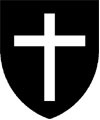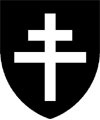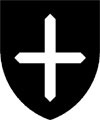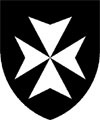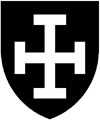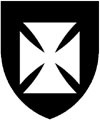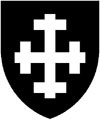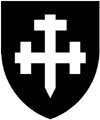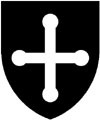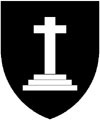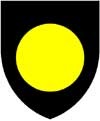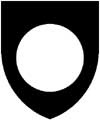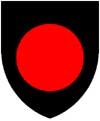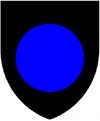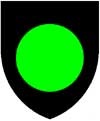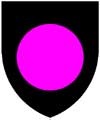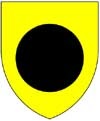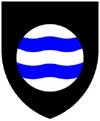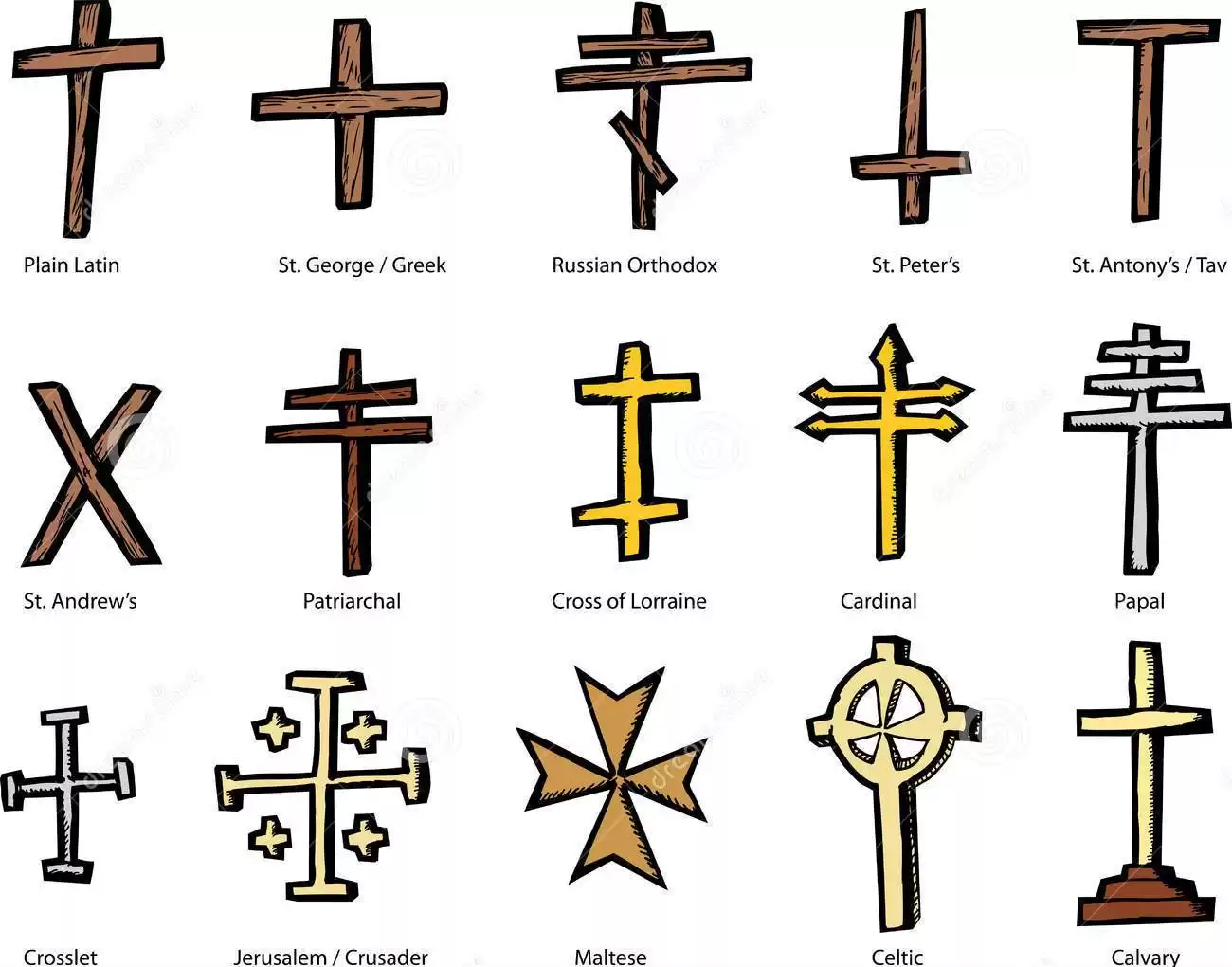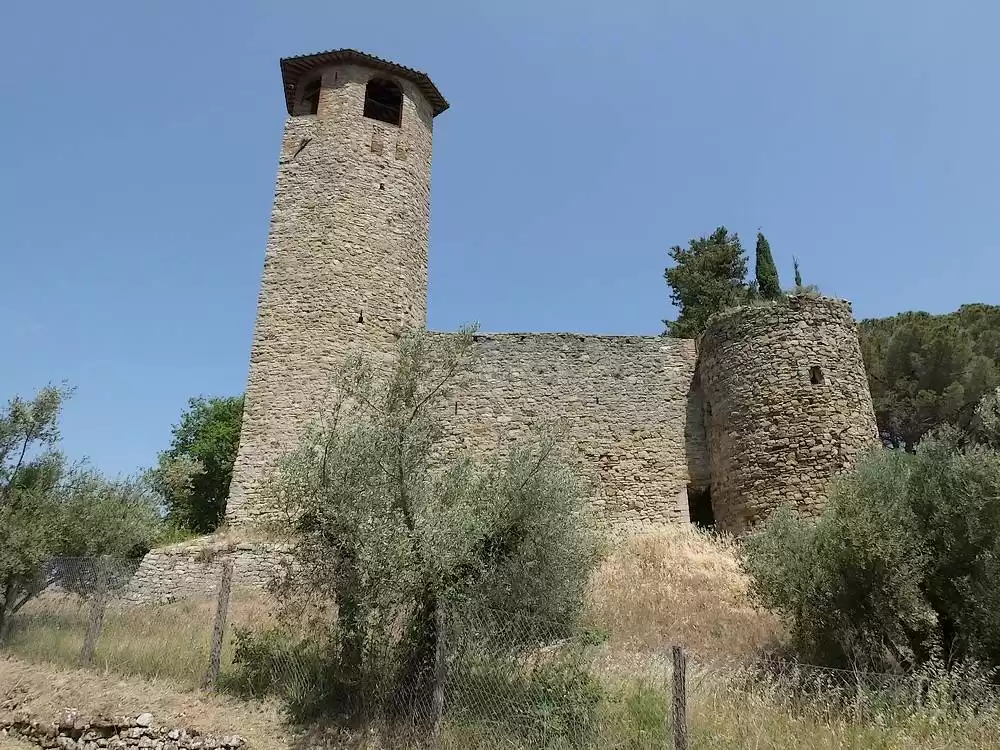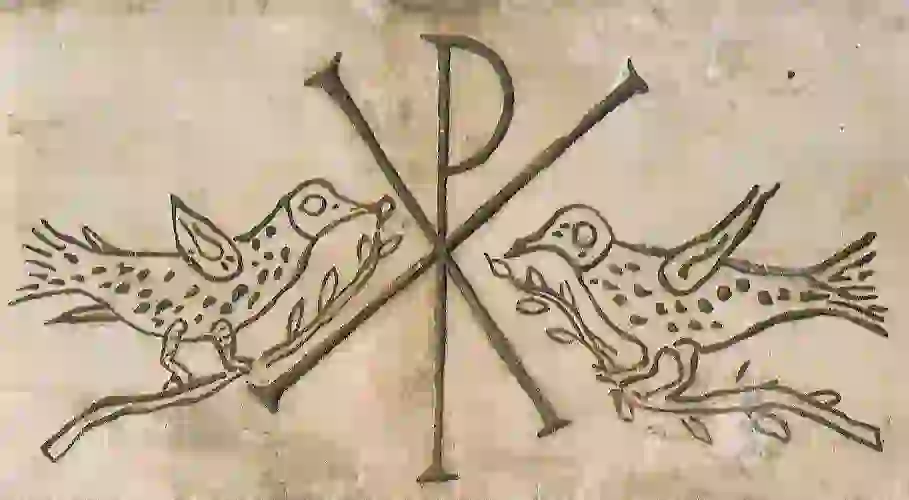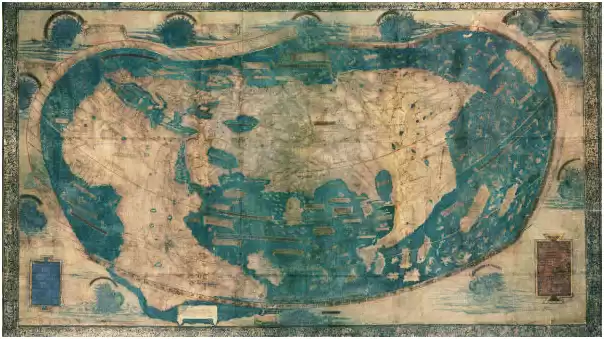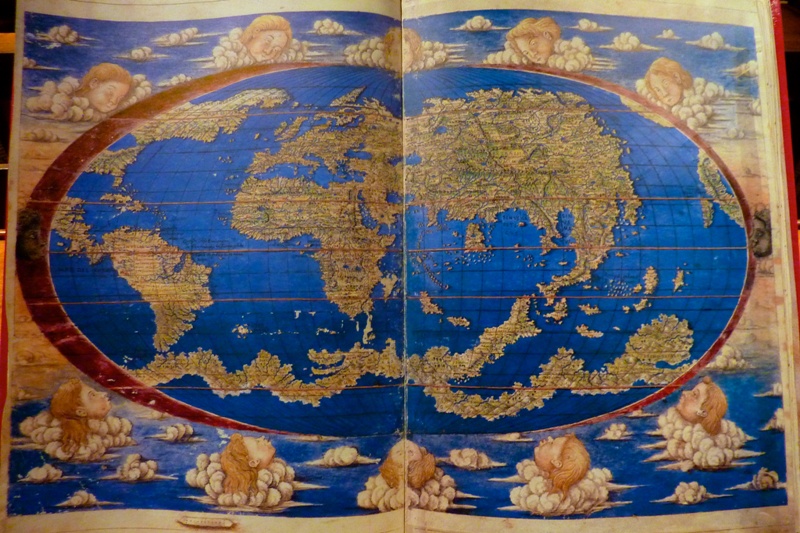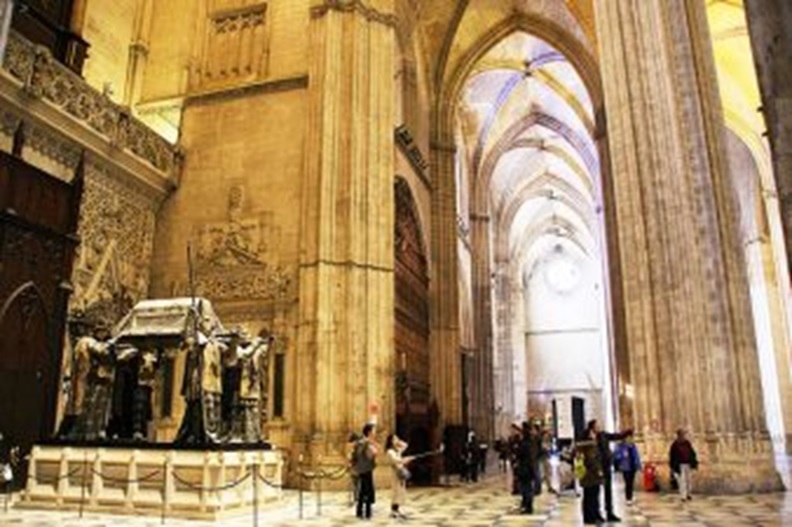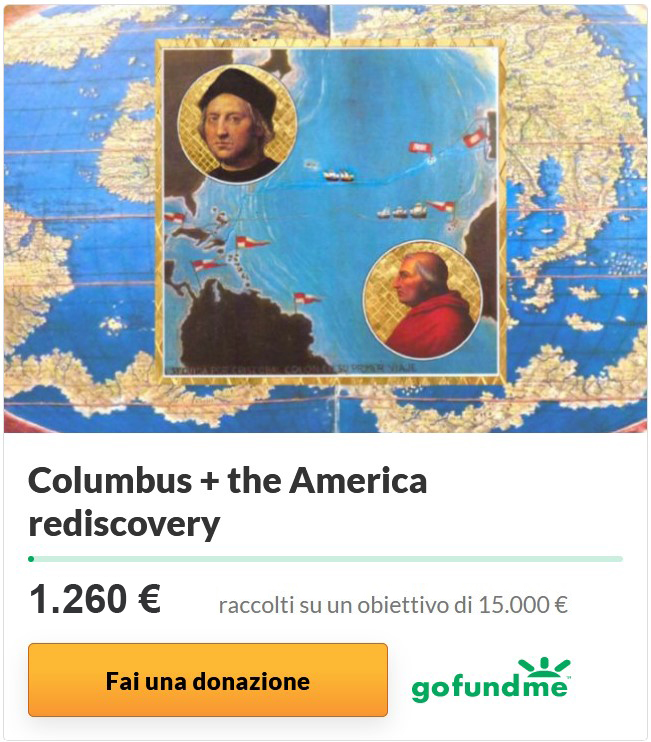Designs were invented to help recognise one man from another. How far back this idea was first put into practice is not known but from the first half of the twelfth century (1100-1150) knights began to use designs on their flags and shields to identify themselves in battle and in tournaments. The designs commonly passed down from father to son and became means of identifying an entire family and not just a single person. Designs were not only used by knights for military purposes. Designs were used by ordinary people for marking their territory or possessions. They were also used as seals on documents to prove their authenticity. The use of designs in the early twelfth century we now call heraldry. It may have begun at this time because of the popularity of tournaments where a knight in armour could only be recognised by some kind of design on his flag or shield. It may have become popular during the Crusades for identifying those men who associated themselves with a particular knight.
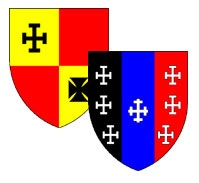
Grammar
Over time a common set of designs were developed and a grammar of heraldry was defined. This meant that the layout of a shield could be described in words. The description of a shield and its layout is known as the blazon and with the description anyone who understood the grammar could reproduce the design of the shield. The description not only defines the colours and shapes but also defines the way that animals are facing and posed.
Design your own shield
You can either start at the first section (see below) and work your way through or you can jump straight to the section of your choice. You will design your own shield as you go from section to section. You can save your shield and come back to it at any time.
Sections
These next series of pages take your through the basics of heraldry and allow you to create your own simple medieval heraldic design.
Section 1: Tinctures
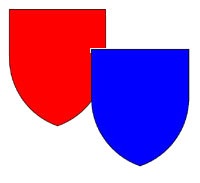
Tinctures in heraldry are the names given to the standard colours, metals and furs that cover the shield or flag. There are four main colours (black, red, blue and green). These are also known as sable, gules, azure and vert respectively.
Section 2: Divisions
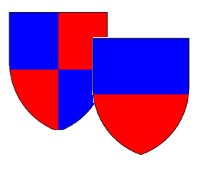
Divisions of the Field: In heraldry a shield can be divided into major sections. These are known as Divisions of the field.
Section 3: More Divisions
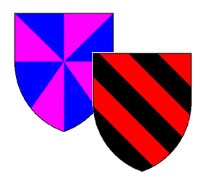
Additional divisions of the Field: These divisions are based on combinations of the major sections described in the previous section and provide many more ways of decorating a shield.
Charges
Any design on a shield is known as a charge. A charge can be placed on another charge, and a charge that has another charge on it is called charged. Charges are divided into two main groups, the ordinaries, and the common charges.
Section 4: Honourable ordinaries
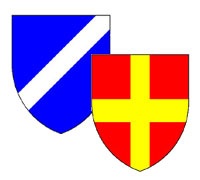
Ordinaries are basic geometrical shapes that are placed on the shield. There are several ordinaries that are concidered to be the orginal designs used in heraldry and these are known as the Honourable Ordinaries.
Section 5: Sub-ordinaries
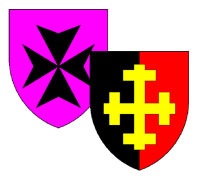
Sub-ordinaries are variations on the basic honourable ordinaries already detailed above. The variations were invented because so many different shield designed were needed.
Useful Terms
Field: The whole surface of the shield. Charges: Bearings and emblems on the shield. These are divided into ordinaries and common charges. Ordinaries: The well-defined emblems with specific names and positions on the shield. Also includes sub-ordinaries.Common charges: All those emblems that are not covered by ordinaries.Tintures: The colours, metals and furs that cover the field.Blazon: The verbal or written description allowing the shield and surrounding parts to be reproduced.
Origins of Heraldry

Designs were invented to help recognise one man from another. How far back this idea was first put into practice is not known but from the first half of the twelfth century (1100-1150) knights began to use designs on their flags and shields to identify themselves in battle and in tournaments. The designs commonly passed down from father to son and became means of identifying an entire family and not just a single person. Designs were not only used by knights for military purposes. Designs were used by ordinary people for marking their territory or possessions. They were also used as seals on documents to prove their authenticity. The use of designs in the early twelfth century we now call heraldry. It may have begun at this time because of the popularity of tournaments where a knight in armour could only be recognised by some kind of design on his flag or shield. It may have become popular during the Crusades for identifying those men who associated themselves with a particular knight.
Grammar
Over time a common set of designs were developed and a grammar of heraldry was defined. This meant that the layout of a shield could be described in words. The description of a shield and its layout is known as the blazon and with the description anyone who understood the grammar could reproduce the design of the shield. The description not only defines the colours and shapes but also defines the way that animals are facing and posed.
Design your own shield
You can either start at the first section (see below) and work your way through or you can jump straight to the section of your choice. You will design your own shield as you go from section to section. You can save your shield and come back to it at any time.
Sections
These next series of pages take your through the basics of heraldry and allow you to create your own simple medieval heraldic design.
Heraldry - The Sub-ordinaries
Next in importance after the honourable ordinaries are the sub-ordinaries. The sub-ordinaries are variations of the honourable ordinaries and were invented because so many different shields were needed it would have not been possible if only the limited number of honourable ordinaries were used. Each of the honourable ordinaries has their own variations.
The Sub-ordinaries of the cross
|
LATIN |
PATRIARCHAL |
POINTED |
MALTESE |
POTENT |
|
FORMY |
CROSSLET |
CROSSLET FITCHED |
POMMEL |
CALVARY |
These are a few of the sub-ordinaries of the cross. There are many more but all of these can be used in the shield designer. See below.
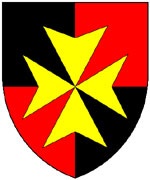 Quarterly sable and gules a maltese cross or
Quarterly sable and gules a maltese cross or
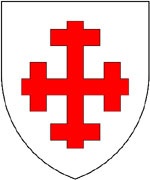 Argent a cross crosslet gules
Argent a cross crosslet gules
Roundels
Roundels are discs and they have different names depending on their colour. The colours and names are shown below. Normally the bezants (gold), plates (silver) and fountains (blue and white wavy lines) should be drawn flat while the other roundels are shaded to give them a spherical shape. The current version on the shield designer does not do this.
|
BEZANT |
PLATE |
TORTEAU |
HURT |
|
POMME |
GOLPE |
PELLET |
FOUNTAIN |
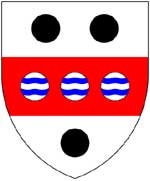 Argent on a fess gules between three pellets three fountains.
Argent on a fess gules between three pellets three fountains.
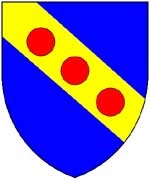 Azure on a bend or three torteaus.
Azure on a bend or three torteaus.
The Medieval Shield Designer
You can choose to add one of the additional divisions shown above to your shield. These can be found on the 'Set Field Division' popup. At the bottom of the popup is a 'More' button that will give you these extra division styles.
Points of the shield
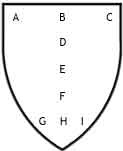
A: Dexter Chief
B: Middle Chief
C: Sinister Chief
D: Honour Point
E: Fess-point (middle of shield)
F: Nombril / Naval point
G: Dexter Base
H: Middle Base
I: Sinister Base

